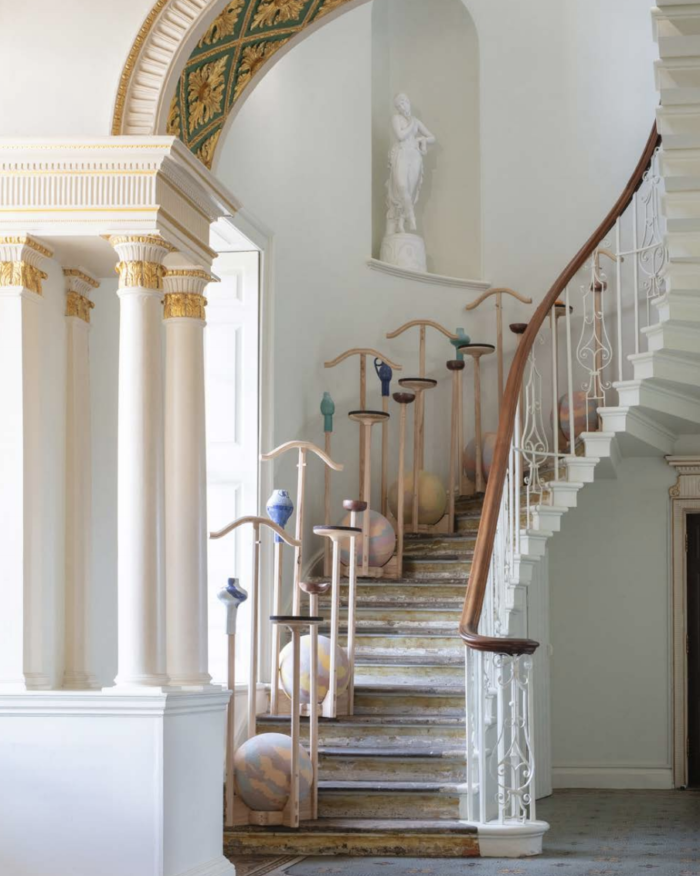With 2020 in the rearview mirror, and the end of the pandemic (fingers crossed) insight, there’s a lot of changes to be assessed. But there are also a lot of lessons we can learn—lessons that will put us in good stead, whatever the future holds.
Lessons about the importance of home and having different needs. We value nature and the environment more than ever, a new kind of travel is blending work and play, and a shift to e-commerce has accelerated five years thanks to the lockdown. Breakfast has been upgraded, adventure dining is hot. Cutlery and tableware are being reimagined to reflect evolving dining etiquette. Luxury travel embraces the membership model. Remote destinations replace dense big cities as top destinations. Judging from the incoming changes, here are some clear lessons most people have learnt for home, travel, dining, work and retail, about the road to recovery being truly personal. Read more, ‘Top 10 Design Trends For 2021: Meet Your New Home.’
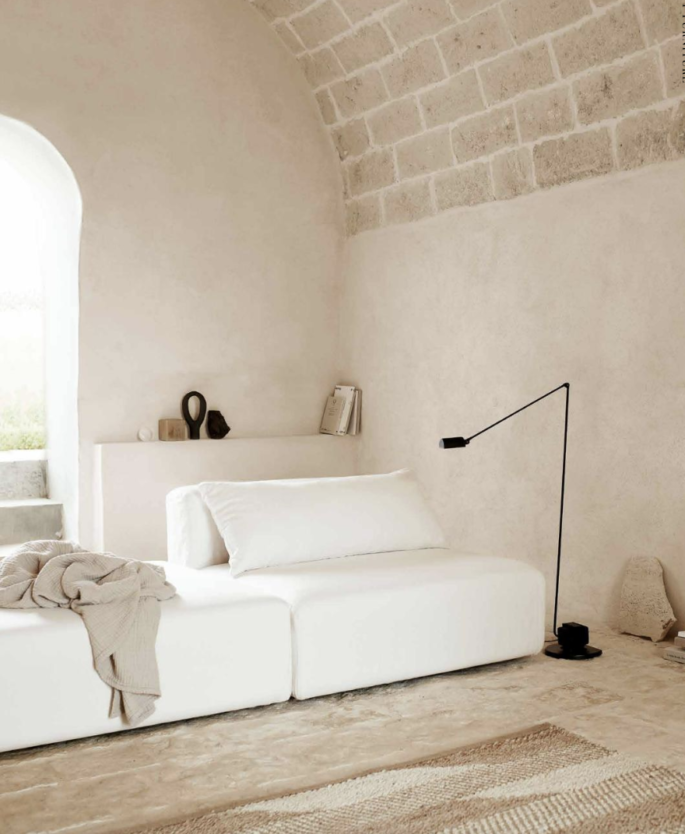
Interiors are becoming sanctuaries as never before, and as people are seeking stability, they’re gravitating toward neutral colours and spaces that soothe, comfort and protect. Tine K Home aptly ‘STAY COLLECTION 2021’ Catalogue.
1. Rooted reassurance
People are turning to nature-inspired design to create a sense of comfort and stability according to Wunderman Thompson data. Feeling unsettled during a period of unprecedented health threats, social unrest and political turmoil, people are hunkering down and searching out steadying elements that offer a feeling of grounding and security. In particularly stressful times, the practice of nature immersion is carrying over into interior spaces, which are being cocooned in warm, earthy tones to evoke a connection to nature in a calming, soothing environment. Read more, ‘9 Design Trends We Will See In The Very Near Future.’
Interiors are becoming sanctuaries as never before, and as people are seeking stability, they’re gravitating toward colours and spaces that evoke feelings of warmth and security. The softness, dependability, and versatility of neutrals create interiors that soothe, comfort and protect. Read more, ‘Thes Are The 10 Design Requests People Will Make Post Pandemic.’
Dulux’s 2021 colour of the year ‘Brave Ground’ was selected as an “elemental” shade that reflects “the strength we can draw from nature,” the brand explains.
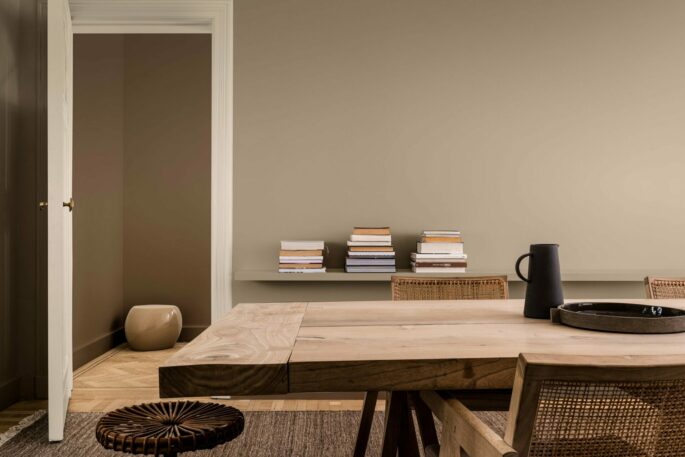
Dulux’s Colour of the year for 2021 is low and behold ‘Brave Ground’, a befitting and calming neutral.
2. Rewilding
The rising rewilding movement aims to restore nature, for the benefit of wildlife, the planet—and people too. Humans have an active role in driving regeneration and the fight against climate change. Wunderman Thompson Data finds that 58% of people say they value the outdoors and the environment more as a result of the pandemic crisis. Read more, ‘How Coronavirus Will Change Our Homes in the Next Decade.’
3. Repair
Repair is a forgotten activity, that has been very much part of the pandemic zeitgeist, and not just for frugal economic reasons, but because of the emotional — perhaps sentimental — power that mended or repurposed items can have. The idea of rummaging through your cupboards to find items that broke or broke down some while ago – is something we used to do 50 years ago. But as goods became cheaper, repairs suffered. Sustainability is at the core of the issue. Each of us, according to the World Bank, throws away about three-quarters of a kilo of waste a day, much of which is burnt in an environmentally harmful way, or dumped as landfill. Use a grout pen, and in minutes your bathroom tiling has a “showroom finish”. Other quick fixes include painting a room, modernising furniture and silencing creaky floorboards. Read more, ‘An Evolution: Trend Report Exploring What’s Next For Design.’
Lockdown has proved the perfect time to “pull your finger out”.
4. Member-based services
Luxury travel embraces the membership model. In July 2020, famed Los Angeles hotel Chateau Marmont—a favourite among Hollywood stars—announced that it would become a members-only hotel over the following 12 months. Members can purchase shares of the property and in exchange, they get access to the hotel, use of a private dining area, a personal butler, as well as the right to store their belongings and book extended stays. Following Chateau Marmont, the hotel’s owner André Balazs plans to roll out the membership model at other properties in Milan, Paris, Tokyo, London and New York. Luxury travel club Manifest, which opened in August 2020, offers “escapes”— curated, small-group trips and private air travel for its members.
Existing high-end travel clubs have experienced unprecedented surges in demand following the COVID-19 outbreak. Exclusive destinations and private transport are nothing new in the world of luxury travel, but these upgraded initiatives point to the growing popularity of the membership model for clients who seek elite, private travel solutions.
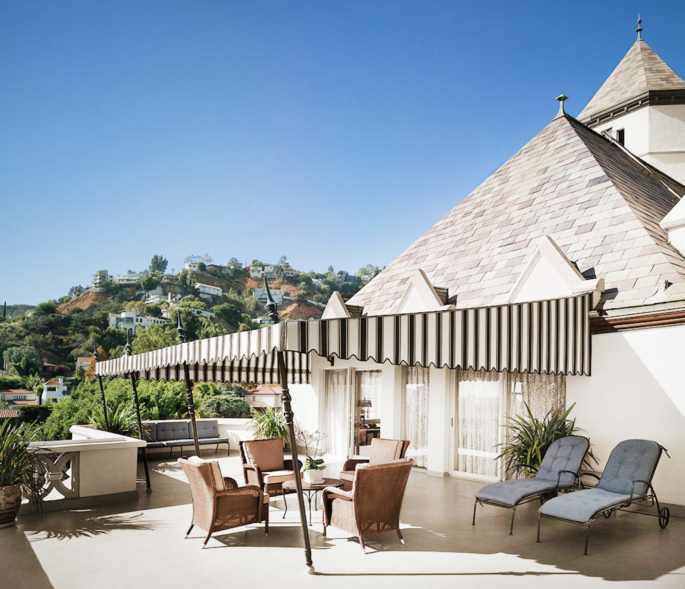
Famed hotel Chateau Marmont, began a members-only service during 2020. Members purchase shares of the property and in exchange, get access to the hotel, use of a private dining area, a personal butler, as well as the right to store their belongings and extended stays.
5. Multigenerational travel
After months of separation, extended families are now opting to holiday together. As households have reduced their social circles due to COVID-19 and some travel restrictions ease, a multigenerational holiday with children and grandparents has become a viable, less risky option for many families, Christie Hudson, senior public relations manager at Expedia, told USA Today. As a result, private vacation home rentals—popular with large groups—are rebounding more quickly than other types of accommodation. “While some are only socializing with their own household or immediate family, others—myself included—have expanded that circle to include the grandparents,” Hudson said. “The natural extension is to take it on the road and travel together as well.”
In Asia, the trend of traveling with kids and grandparents has been apparent in recent years, often as an alternative to Lunar New Year reunions in hometowns. Now, as international travel remains constrained and family time takes priority, travel brands beyond Asia may also do well to tap into multigenerational groups.
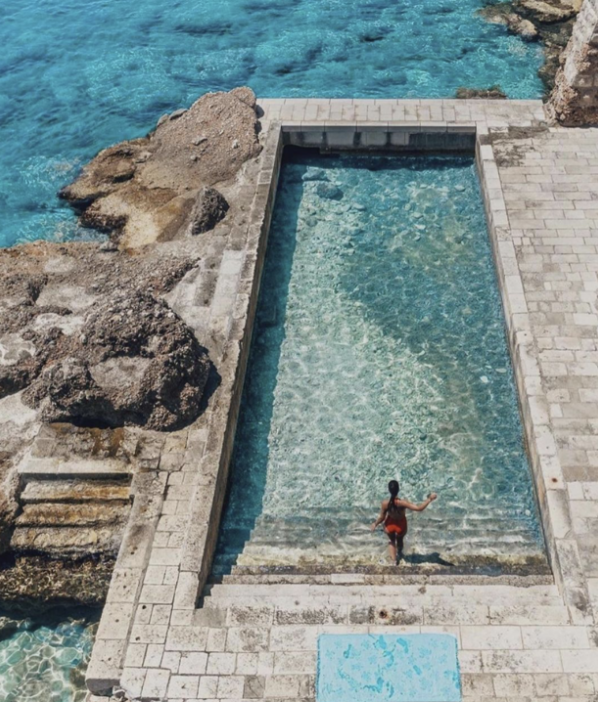
Preference for post-pandemic travel destinations will include nature, adventure and solitude will rise for those who desire a mindful, truly socially distant escape.
6. Hospitality redesigned
With consumers looking for safe, socially distanced stays while also yearning for connection, many hotels are rethinking their offerings. Cocooning, self-contained pods, venues that make the most of outside spaces, and expansive yet welcoming shared public areas are among the features that could characterise hotel and hospitality design in the COVID-19 era.
Guests’ desire to capture a sense of freedom—and their hyper-awareness around contracting coronavirus—is likely to influence hotel design in coming years.
The rise in popularity of self-contained accommodation is also accelerating a trend that began with hotels instilling more of a “home away from home” feel to their offerings, in a response to platforms such as Airbnb.
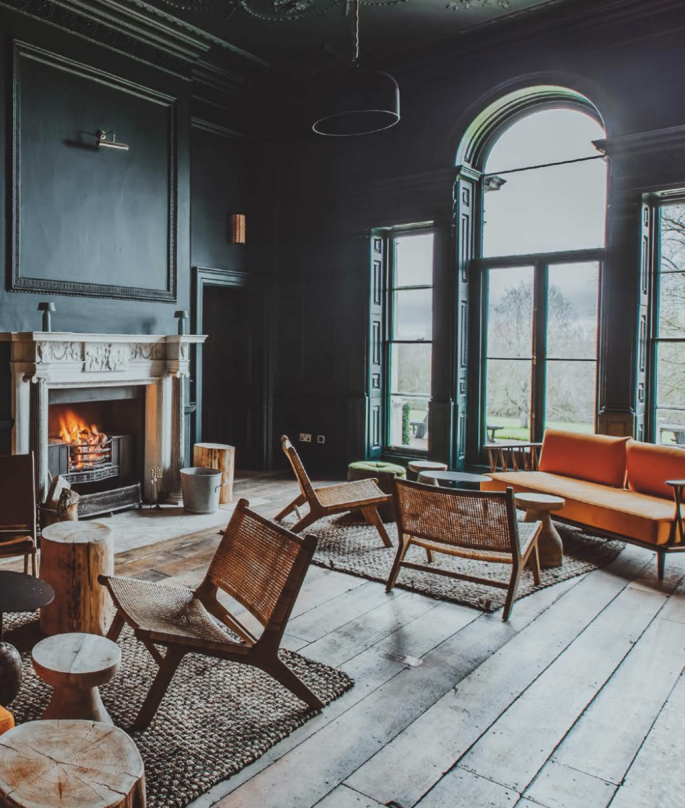
Would-be travellers are staying closer to home, driving local revivals. The Birch Hotel in Hertfordshire, England has become a hotspot for Londoners. (Also lead image).
7. Travel bubbles:
Would-be travellers are staying closer to home, driving local revivals. Travellers are looking local as the tourism industry constricts. Various countries have selectively opened up their borders to admit regional travellers from neighbouring areas. Australia and New Zealand were among the first to publicise plans for a “corona corridor,” although the corridor didn’t open until October 2020.
Holidays “will probably look more like they did in the 1970s, before deregulation made air travel more affordable,” the New York Times predicted in 2020. “Think of highways with cars packed full of gear and children in the back asking- “Are we there yet?”
As travel in a pandemic world shifts “from airplane to the car, big city to a small location, hotel to home,” as Airbnb CEO Brian Chesky noted in a June 2020 interview on CNBC, travellers are rediscovering destinations in their own backyards in place of exotic trips to far-flung locales.

Travel is being redesigned with increasingly popular hospitality experience focusing on respecting a location’s surroundings and helping guests feel more connected to nature. Tine K Home aptly ‘STAY COLLECTION 2021’ Catalogue.
8. Subterranean resorts:
Hotels are being designed to seamlessly integrate into the landscape, maintaining the natural beauty and tranquility of their surroundings. This increasingly popular hospitality experience centres on respecting a location’s surroundings and helping guests feel more connected to nature. Architects are designing hotels that blend into the landscape, offering guests the chance to enjoy beautiful and unspoiled natural surroundings. Travel experiences are increasingly centreing on protecting and preserving the environment.
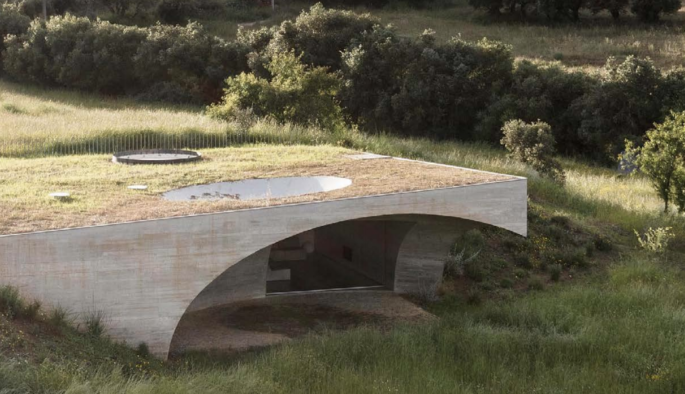
Hotels are being designed to seamlessly integrate into the landscape, maintaining the natural beauty and tranquility of their surroundings such as Casa na Terra design by Manuel Aires Mateus for Silent Living. Photography by Nelson Garrido.
9. Subscribed stays:
Hotels are reimagining the subscription model to attract customers and appeal to a growing clientele. The events of 2020 have both accelerated the trend in remote working and stymied international travel. Travel subscriptions are a way for both hotels and residences to attract much-needed custom, and for these businesses to pivot to offer accommodation that’s targeted to remote workers, rather than traditional holidayers. This trend could be poised to cement itself after the pandemic if, as the results of a May 2020 Upwork survey predict, one-fifth of the workforce could be entirely remote after COVID-19.
10. Isolationist travel:
For 2021, think remote destinations, private lands, and no other tourists in sight. Travel hotspots in 2021 will be less about dense big cities and more about spacious immersions in the great outdoors. As the travel industry starts to pick up, preference for destinations that include nature, adventure and solitude will rise for those who desire a mindful, truly socially distant escape.
Even once a vaccine is available, the allure of the outdoors is evergreen, and a year of being pent up will make the desire to be in nature even greater.
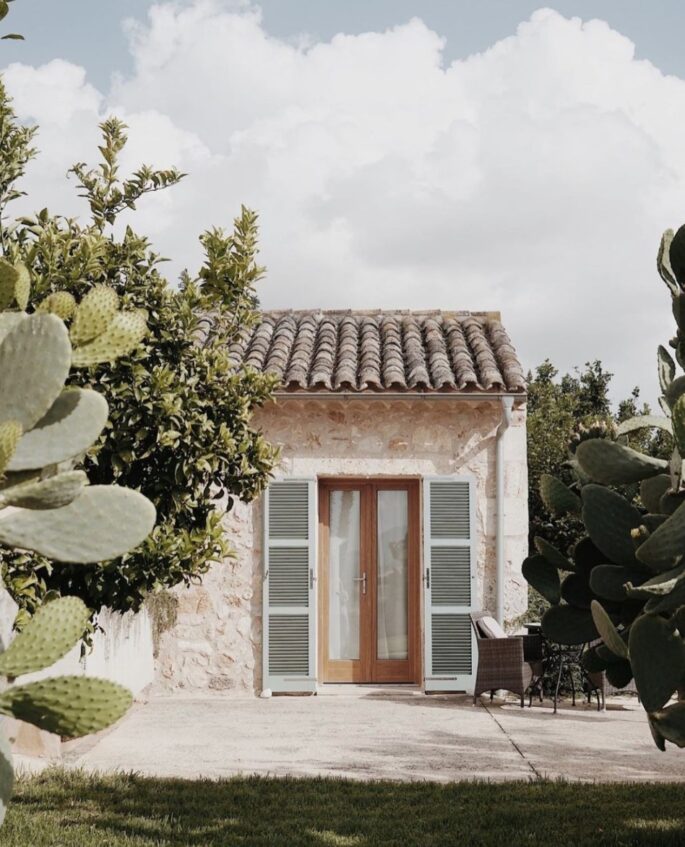
For 2021, think remote destinations, private lands, and no other tourists in sight such as this remote villa in Provence.
11. Branding together
A new class of leadership means that brands are putting aside competition and instead collaborating to tackle social and environmental challenges. Generation Z are setting a new standard for brand purpose. In an October 2020 survey by Wunderman Thompson Data, 80% of US gen Zers say that brands should help make people’s lives better and 82% believe brands should leave aside their differences and work together for the greater good. Brands are listening.
The cultural shift from “me” to “we” is extending to brands, demonstrating that change requires a collaborative effort.
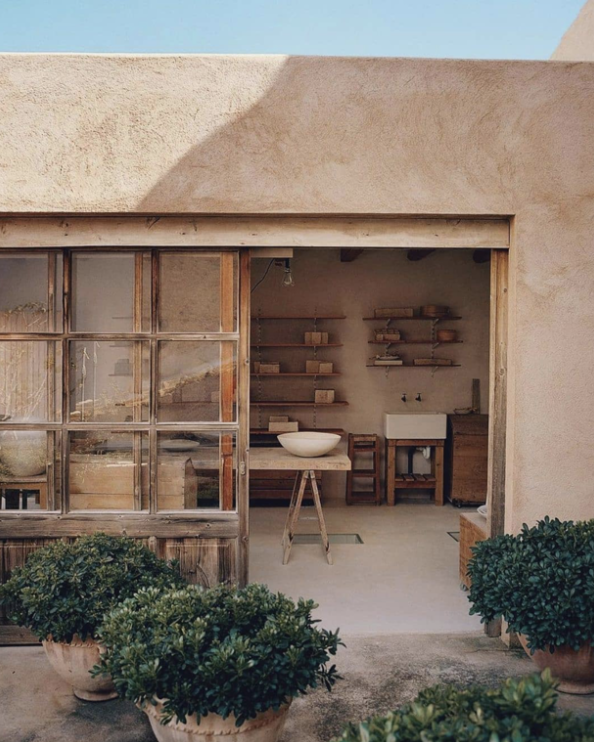
Rooted renaissance: Feeling unsettled during a period of unprecedented health threats, social unrest and political turmoil, we are hunkering down and searching out steadying elements that offer a feeling of grounding and security.
12. The visual language of connectivity:
How can advertisers and brands convey togetherness without seeming irresponsible? Scenes of clustered crowds and large gatherings will continue to appear inappropriate as 2021 unfolds. The message of community is being reframed, as Milis notes: “I’ve been extremely happy to see a scaling focus on building a sense of community through compassion as well as a growing understanding that we don’t have to occupy the same physical space to build community, to support one another.”
13. Big brands go circular:
From Gucci to Uniqlo, fashion brands are getting into the second-hand business. Gucci announced a partnership with Nasdaq-listed luxury consignment store the RealReal in October 2020, following in the footsteps of Stella McCartney and Burberry. The Gucci x TRR shop stocks items from consigners as well as products directly from the Italian fashion house.
The trend is driven by sustainability concerns and by the fact that wallets are slimmer in a global recession. For luxury brands, it’s also a way to police knock-offs.
The second-hand clothing market is forecast to grow from $28 billion today to $64 billion in 2024, according to San Francisco-based ThredUp, which calls itself “the world’s largest online thrift store.” The resale market grew 25 times faster than the overall retail market in 2019, powered by 64 million shoppers. Brands are acknowledging that the second-hand market is becoming a key cog in the circular economy.
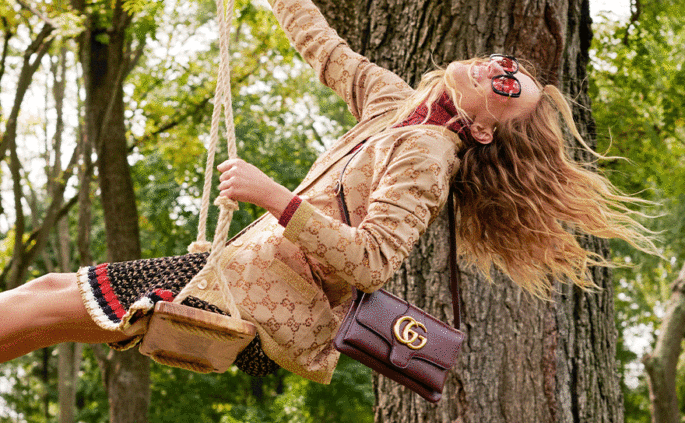
Brands are getting into the second-hand business. The trend is driven by sustainability concerns and by the fact that wallets are slimmer in a global recession. For luxury brands, it’s also a way to police knock-offs. Pictured is The RealReal and Gucci’s Circular Economy partnership.
14. Adventure Dining:
Diners are seeking out unforgettable gourmet experiences in a new era of social distancing. Restaurateurs are bringing high-end, socially distanced dining to unique locales for customers in search of a one-of-a-kind meal. In Budapest, Michelin-starred eatery Costes is taking fine dining to new heights. On October 17, 2020, the restaurant served a four-course dinner on the Budapest Eye Ferris wheel, which offered guests stunning views of the city from the four-person cabins. A decline in visitor numbers due to COVID-19 travel restrictions gave Costes owner Karoly Gerendai the opportunity to implement his vision of creating a restaurant at the attraction. Tickets for the $155 meal sold out in days, Reuters reported, and, following the success of the event, Gerendai announced plans to repeat the event in spring 2021. Luxury Parisian hotel Les Bains drained and repurposed its underground swimming pool—which dates back to 1885 when the hotel was originally built as a bathhouse—to create a unique private dining room in September 2020.
The ritual of eating out is evolving. High-end dining destinations are getting creative, offering exclusivity and unparalleled experiences in an effort to comply with social distancing measures without compromising on ambience.
15. Breakfast upgraded:
More time at home means that breakfast is transforming from a rushed necessity to a ritual that people are increasingly investing in. For many people, working from home has meant having the time to slow down and savour breakfast—rather than scoffing a croissant on the commute. What’s more, ‘breakfast’ is no longer confined to first thing in the morning. We are seeing traditional breakfast items, like filled croissants or breakfast burritos, being enjoyed throughout the day.
With people spending more time at home and COVID-19 restrictions leading many to socialise earlier in the day, breakfast is enjoying a renewed appreciation.
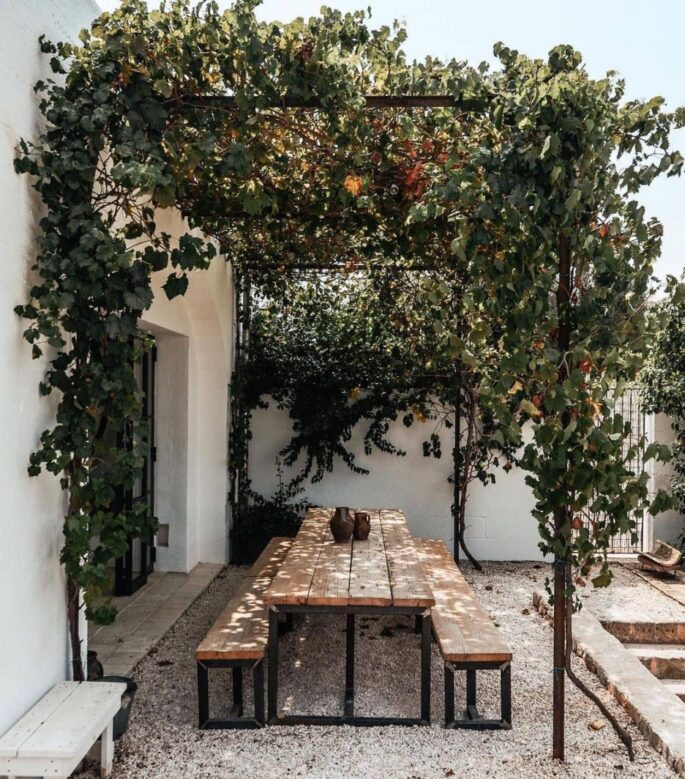
Diners are seeking out unforgettable experiences in a new era of social distancing.
16. Dining redesigned
Cutlery and tableware are being reimagined to reflect evolving dining etiquette. Designers are turning their attention to the table in an effort to elevate the distanced dining experience. Designers are reimagining dining spaces to protect diners and adhere to social distancing measures without diminishing the dining experience. Now, designers are focusing on the details of dining, innovating how it looks to serve and share food. These latest projects point to a more sophisticated and nuanced future of physically distanced dining.
17. Intimate dining:
High-end restaurants and culinary start-ups are positioning private dining as the latest luxury when eating out. When the pandemic left the hospitality industry in decline, some of London’s top high-profile chefs grouped together to create a new way of bringing gourmets and food together again.
These dining experiences are reviving the excitement of eating out that was lost throughout 2020. They point the way to a future of culinary experiences where privacy and personalization are paramount.
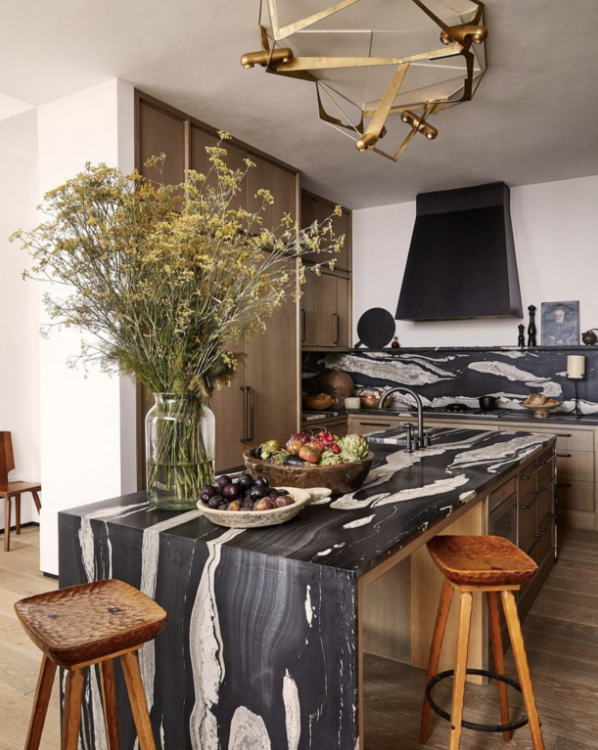
More time at home means that breakfast is transforming from a rushed necessity to a ritual that people are increasingly investing in. Tribeca apartment in Manhattan designed by Monica Gibson featuring Vincenzo de Cotils light fixture above an island of honed Copacabana stone. Photo: William Abranowicz.
18. Retail Reset:
How will the pandemic shape the evolution of retail experiences? Despite the hope that 2021 will bring looser COVID-19 restrictions and a return to social life, consumers and retailers will continue to be mindful of minimising touch and close contact with others. For stores looking to entice customers to shop in person rather than online, demand for IRL experiences that place hygiene high on the agenda has dovetailed with the ongoing trend for creating physical spaces with impact.
While COVID-19 dealt a hard blow to physical retail, it has also brought into sharp relief the power of an IRL retail experience.
Whether through more individualised experiences, digital elements, or inspiring, unique design, retailers will strive to make physical retail experiences truly stand out, while keeping customers safe.
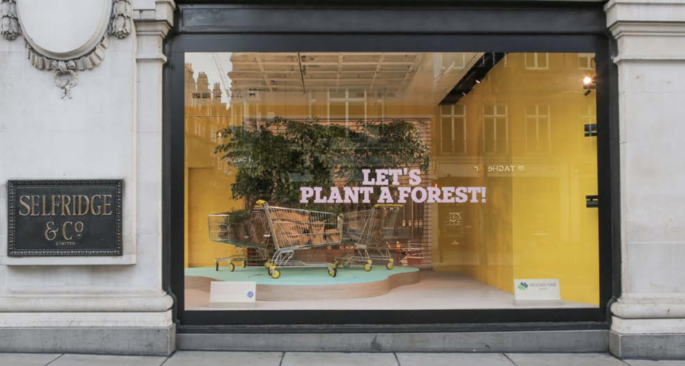
Retailers will strive to make physical retail experiences truly stand out, while keeping customers safe. Selfridges windows in late 2020.
19. Anti-Amazon retail:
The growing backlash to Amazon’s monopoly of online shopping carts is driving small businesses to seek alternative solutions. The shift to e-commerce has accelerated by five years thanks to the pandemic, according to IBM. One of the prime beneficiaries of this shift has been Amazon, whose sales increased by 40% in the second quarter of 2020 compared to 2019. At the same time, small businesses with a limited online presence have suffered greatly as footfall to bricks-and-mortar stores has dropped. There has been a growing consumer backlash to Amazon’s dominance in the e-commerce arena, with hashtags such as #boycottamazon trending on Instagram and Twitter. Seizing an opportunity to lure disenchanted consumers away from Amazon, small and medium-sized enterprises (SMEs) with limited online presence are looking to new e-commerce partners to sell their products to new customers.
Online retail is diversifying to better accommodate small businesses.
Although e-commerce giants such as Amazon are undoubtedly benefiting from the shift to online retail, SMEs and the companies supporting them are innovating in the face of change and reaping the benefits of going digital. As small businesses integrate into the e-commerce world, consumers will have more options if they wish to go beyond the big retailers and buy local.
20. At-home empires:
The home is now flexing to encompass entire worlds, from the living room to the office and everything in between. As the work-from-home model, historically a rare luxury in more traditional companies, becomes the norm for many, home design is adapting for flexible functionality. “What was our home has to become an office or a schoolroom,” Ivy Ross, vice president of hardware design at Google. “So how do we build in the most flexibility into our environments so they can accommodate different modes of being?” Read more, ‘The Biggest Residential Directions For The Year.’
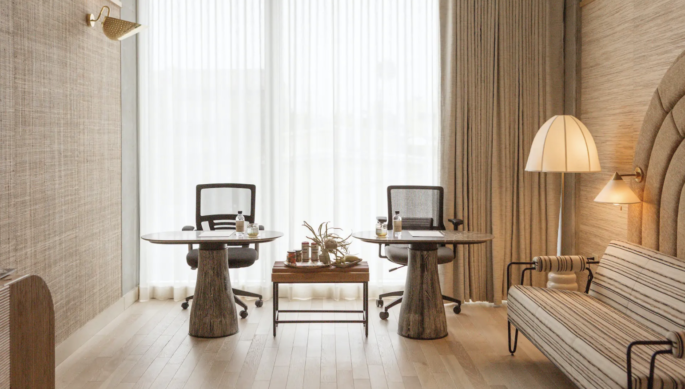
Re-imagined work stations at the Santa Monica Proper Hotel. As the work-from-home model, historically a rare luxury in more traditional companies, becomes the norm for many, design is adapting for flexible functionality.
21. Workcations:
A new kind of travel that blends work and play. The swift normalisation of flexible remote working is affording employees a newfound freedom to work from anywhere—and popular holiday destinations are hoping to attract this freshly minted class of wanderlust workers with novel long-term visas and extended-stay offerings.
As work continues to transition to remote formats, employees are no longer tied to a particular place. Tourist destinations and avid travellers alike are taking advantage of this newly liberated workstyle, advancing digital nomadism— originally charted in “The Future 100: 2018”—from a niche to mainstream practice. As the lines between home, office and getaway continue to blur, brands and businesses have a unique opportunity to redefine how the new luxury vacation looks, catering for both work and relaxation.
22. On-demand Offices:
The travel and hospitality industries are shifting gears to accommodate a new type of visitor: the 9-to-5 worker. In the absence of their traditional clientele, hotels and restaurants are repurposing their spaces as rentable offices.
From boutique accommodation to chains, hotels are redesigning their rooms as semi-permanent offices and offering new daytime rates geared towards remote workers.
The pandemic has fast-tracked growth in the short-term office rental market, giving rise to on-demand workspaces and pointing to a future where the function of places such as restaurants and hotels is much more flexible. “Spaces that can accommodate that more variable use are particularly important,” Wythe Hotel owner Peter Lawrence told Fast Company. “I don’t think this is true just during COVID—I think this is a fundamental shift that’s going to be durable, allowing employees to work from anywhere.”
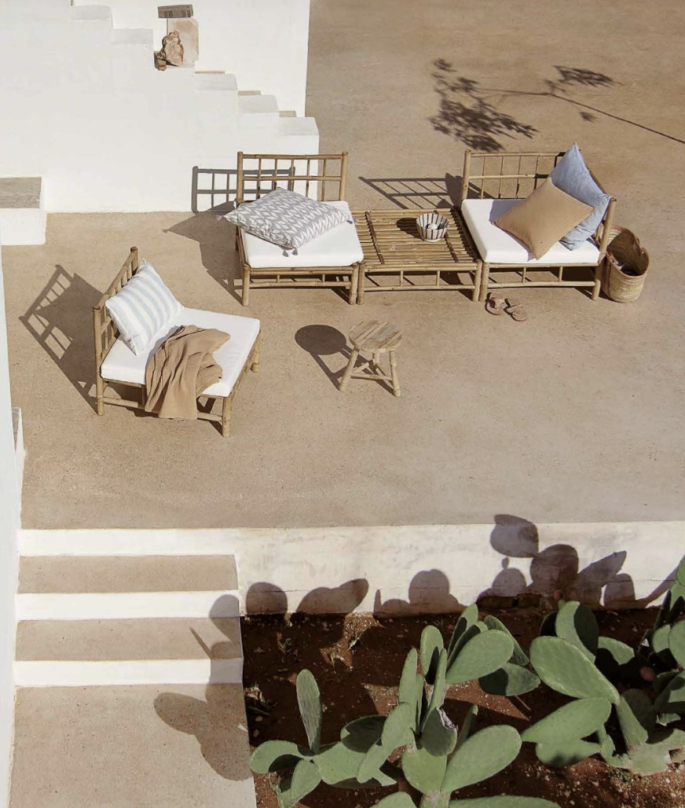
As work continues to transition to remote formats, employees are no longer tied to a particular place with a new kind of travel that blends work and play. Tine K Home aptly ‘STAY COLLECTION 2021’ Catalogue.
This report is an edited excerpt from Wunderman Thompson Intelligence Future 100: Trends and Changes To Watch in 2021.

